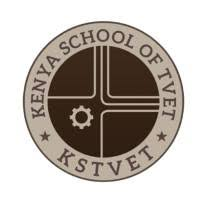Electrical and Electronic Principles and Technology
2. DC and AC Supplies
2.2. AC Supplies
Introduction to AC Supplies
Alternating Current (AC) is the most common form of electrical power used for residential, commercial, and industrial purposes. Unlike Direct Current (DC), which flows in one direction, AC reverses direction periodically, typically in the form of a sine wave. This reversing nature makes AC more efficient for transmitting electricity over long distances, which is why it is used in national power grids.
AC supplies are generated using alternators in power stations and can be easily stepped up or down in voltage using transformers. Understanding AC characteristics, waveform properties, and its behavior in circuits is essential for grasping how electrical systems operate on a large scale.
AC Supplies – Notes
1. Definition
AC Supply (Alternating Current Supply) is a type of electrical current that changes direction periodically and varies in magnitude with time.
2. Waveform
-
The most common AC waveform is the sine wave.
-
Other types: Square wave, Triangular wave (used in some electronic systems).
-
In a sine wave:
3. Characteristics of AC Supply
| Parameter | Symbol | Description |
|---|---|---|
| Frequency | f | Number of cycles per second (Hz) |
| Period | T | Time taken for one complete cycle (T = 1/f) |
| Amplitude | Vmax | Peak voltage |
| RMS Value | Vrms | Effective value =2Vmax |
| Phase | θ | Describes the shift between waveforms |
4. Comparison: AC vs DC
| Feature | AC | DC |
|---|---|---|
| Flow Direction | Reverses periodically | Constant in one direction |
| Transmission | Efficient over long distances | Less efficient |
| Generation | Alternator | Battery, DC generator |
| Voltage Change | Easy with transformer | Difficult |
| Common Use | Power grids, appliances | Electronics, vehicles |
5. Sources of AC Supply
-
Alternators (in power plants)
-
AC generators
-
Inverters (convert DC to AC)
-
Mains electricity (e.g., 230V, 50Hz in India)
6. Applications of AC Supply
-
Powering homes and industries
-
Running electric motors and appliances
-
Lighting systems
-
HVAC systems
-
Transmission and distribution systems
7. Important Formulas
-
Instantaneous Voltage:
-
RMS Value:
-
Power in AC Circuits:
(Wherecos(ϕ) is the power factor)
8. Types of AC Loads
-
Resistive: Heaters, incandescent bulbs
-
Inductive: Motors, transformers
-
Capacitive: Capacitor banks
